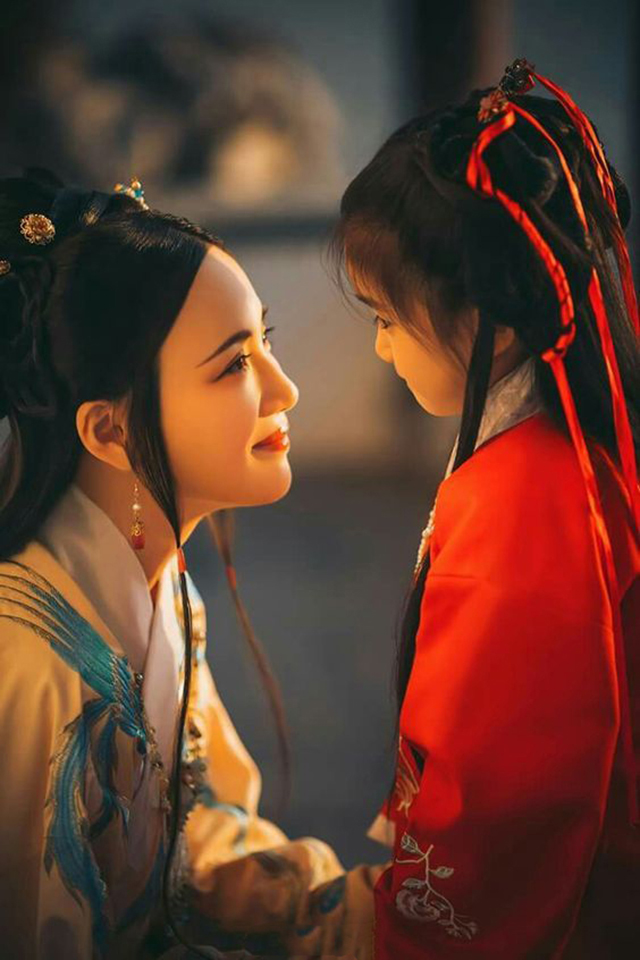Ming Dynasty Wedding Dress: 明新娘服
A Ming dynasty lady in bridal dress~ a delicate cup is ceremonially tilted forward as a sign of honor. The 马面裙 dress is scarlet to mark the occasion of marriage.
She wears a prominent blue Feng Guan 凤冠 other times Di Guan 翟冠 lit "Phoenix Crown" over her head with 3 descending pheasants. 翟 Di translates as clothing for the nobles. It is decorated with tassels of pearl and red jade. The distinctive blue phoenix crown was worn since the Song dynasty, and was prominently depicted in Song imperial artworks. Though the tradition of elaborate Phoenix Crowns 凤冠 was excavated as far back as the Sui and Tang dynasty. You can find a video showing the construction process of an imitated Phoenix Coronet here.
Feng Guan Phoenix Crowns: The numbers of phoenixes, dragons and precious gems on each crown is different. For example, the phoenix crown of Ming Empress Xiaoduanxian has 6 dragons, 3 phoenixes, 5,449 pearls, 71 rubies, and 57 sapphires. Other phoenix crowns of empresses excavated from the Ming tombs have 9 phoenixes, between 12 and 9 dragons, more than 3,500 pearls, and more than 150 gemstones. The pearls, gemstones and kingfisher feathers were made into ornamental flowers, leaves, clouds, and temple ornaments (Chinese: 两博鬓; pinyin: liǎngbóbìn; the 'wings' at the sides and back of the crown).
The privilege of wearing the phoenix crown is reserved for the empress, imperial princesses, imperial concubines, and mandarin official's wives. Most of the commoners would wear the red veil over their faces (like the one worn above the crown here.)
The shoulder and arms of the lady's robe is marked with 绣 embroidered animals, marking her to be a woman of high stations. Phoenix and Qilins marked women of imperial households and high officialdom. Commoner's bridal sleeves would have embroidered flowers 绣团花.




















Comments
Question: are Chinese marriage rites governed by the Confucian Classics or by folk traditions?
Princess Pingyang Co-Founder of Tang Dynasty (feat Xinran Jay zhao)
Almost overwhelmingly Confucian with regional (and traditional spiritual variations)
Paramount is the reverence for ancestors, the way the couples bow is very ritualized.
The couples bow *actually kowtow, as in kneel in supplication to
1st to Heaven and Earth,
then bow to their parents
lastly to each other.
Much of the ceremonies before and after the ordeal are all revolved around Confucian principles. Highly formalized. Although much of that was discouraged during the 60s and early 70s, most of it made a come back now.
This is the best Ming dynasty historical map video I've ever found,you should watch it.